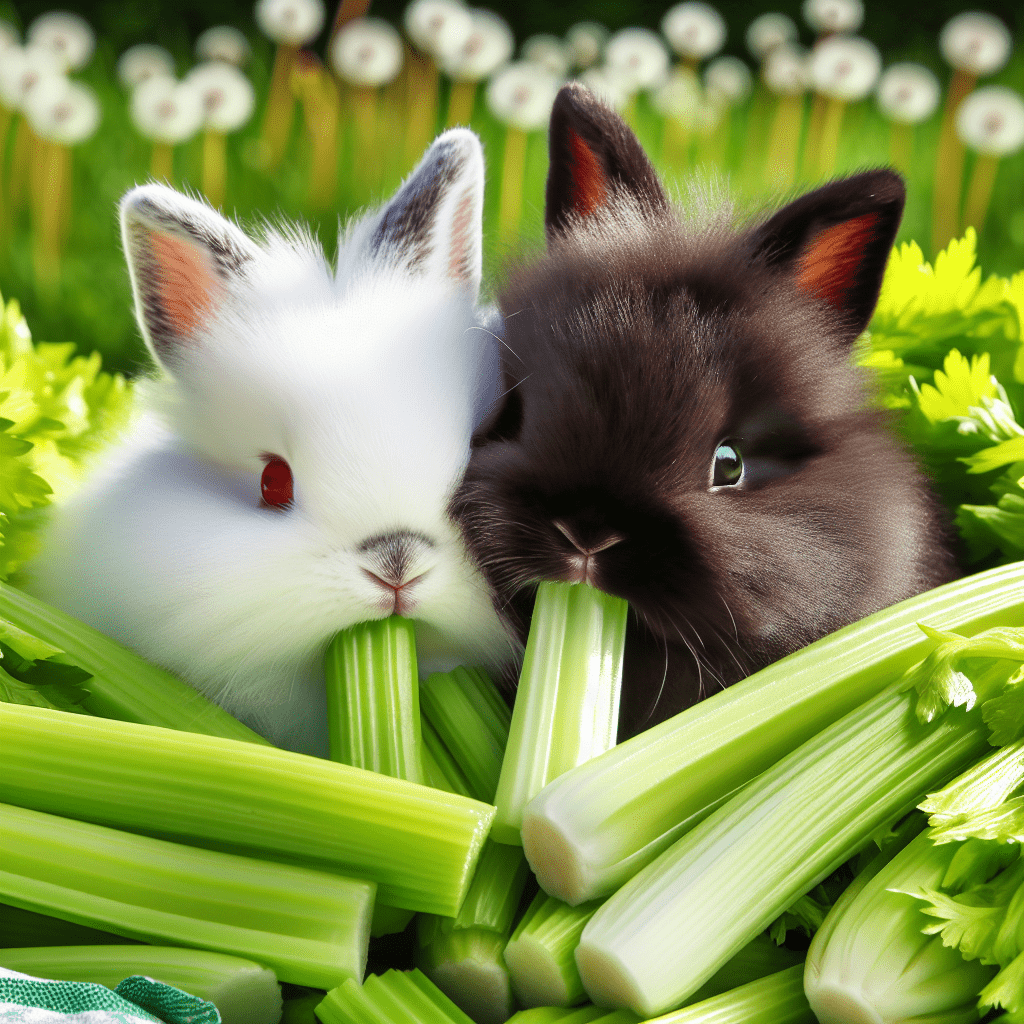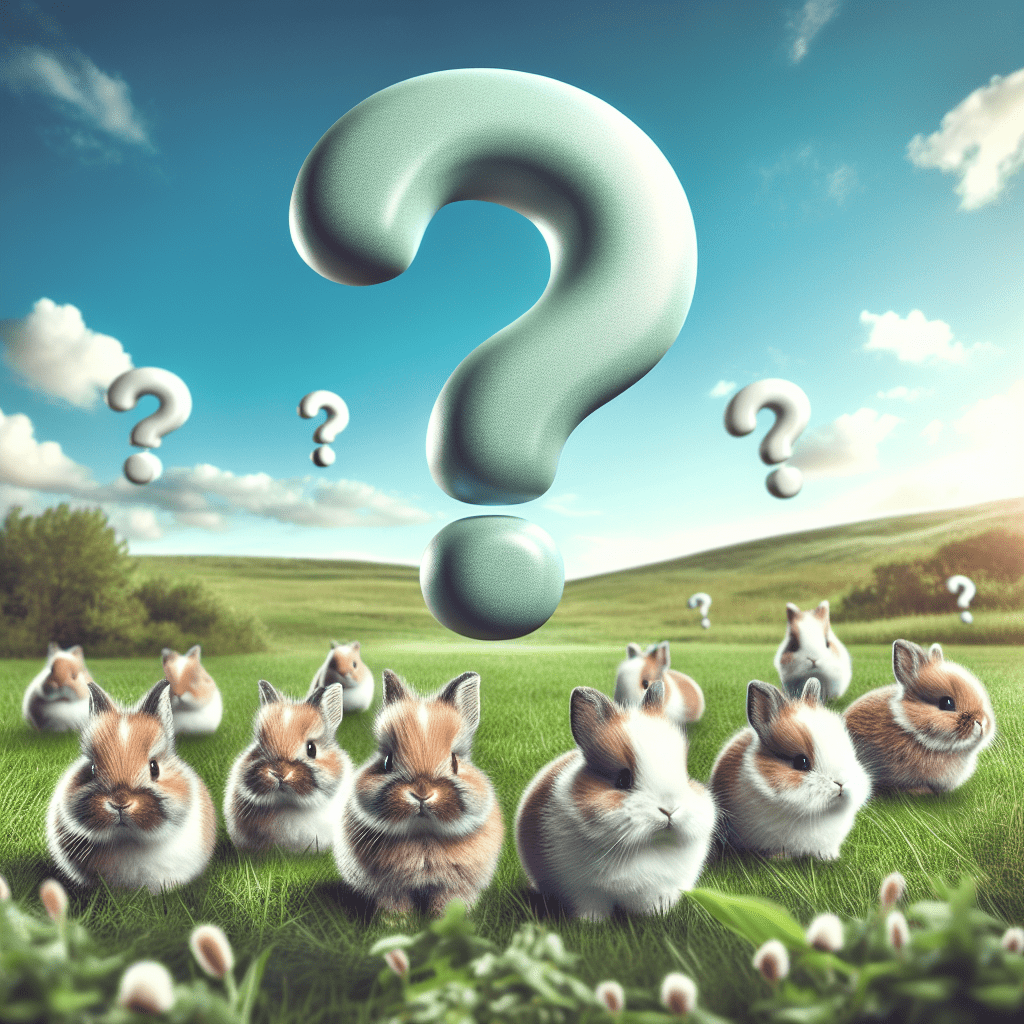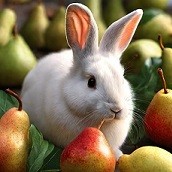
Nibbling on Greens: Safely Feeding Your Netherland Dwarf Rabbit
When it comes to feeding your Netherland Dwarf rabbit, you might wonder if those crunchy stalks of
Article-at-a-Glance
- Celery can be a hydrating and fibrous snack for Netherland Dwarf rabbits, but it should not replace their primary diet.
- Always cut celery into small, bite-sized pieces to prevent choking and gastrointestinal issues.
- Introduce celery gradually into your rabbit’s diet to avoid digestive upset.
- Monitor your rabbit for any signs of digestive distress after eating celery.
- Balancing your rabbit’s diet with a variety of safe
is key to their overall health.
A Snack or a Staple: Understanding Celery’s Place in a Dwarf Rabbit’s Diet
Celery, with its high
The Nutritional Breakdown of Celery
Celery is more than just water; it’s also packed with fiber, which is essential for your rabbit’s digestion. It contains vitamins such as vitamin K, which supports bone health, and folate, which aids in metabolism. However, celery is low in calories and does not provide the complete nutrition that rabbits need, so it should be fed in moderation as part of a varied diet.
Tiny Tummies, Big Concerns: What to Watch Out For
Despite its benefits, celery must be approached with caution. The fibrous strings in celery can cause blockages in a rabbit’s delicate digestive system if not prepared properly. Moreover, an abrupt introduction of new foods can lead to stomach issues. Always observe your rabbit after introducing any new
Risks of Feeding Celery to Netherland Dwarfs
Introducing celery to your Netherland Dwarf rabbit isn’t without its risks. The fibrous nature of celery can lead to choking or gastrointestinal blockages if not prepared properly. Additionally, the high water content, while hydrating, can also dilute the necessary nutrients if overconsumed. Too much celery can disrupt the delicate balance of your rabbit’s diet, which could lead to malnutrition or digestive issues. Always remember, moderation is key.
The Right Way to Introduce Celery to Your Rabbit’s Diet
When adding celery to your rabbit’s diet, start slow. Begin by offering small pieces of celery—about 1/4 to 1/2 inch in length—to avoid any stringy parts that could cause digestive issues. Offer these small amounts once or twice a week to start. Watch your rabbit closely for any signs of digestive discomfort, such as changes in their stool or a decrease in appetite. If all seems well, you can gradually increase the frequency, still keeping celery as a minor part of their diet.
Veggies and Variety: Crafting a Balanced Diet for Your Dwarf
A well-rounded diet is crucial for the health of your Netherland Dwarf rabbit. This means a variety of vegetables to complement their main diet of hay, a small number of pellets, and plenty of fresh water. Vegetables provide essential vitamins and minerals, and the act of chewing on fibrous veggies helps maintain dental health. Ensure that the vegetables you choose are safe for rabbits, and introduce each new veggie one at a time to monitor for any adverse reactions.
The Ideal Diet Composition for Netherland Dwarf Rabbits
The ideal diet for a Netherland Dwarf rabbit consists primarily of high-quality hay, which should make up about 70% of their diet. Fresh water and a small number of pellets should also be readily available. The remaining portion of the diet should include a variety of vegetables, with leafy greens taking precedence. Remember, a balanced diet not only nourishes your rabbit but also provides mental stimulation and satisfies their natural foraging instincts.
Including Celery: How Much and How Often?
As a rule of thumb, celery should be considered a treat rather than a daily staple. A couple of small pieces of celery a few times a week is sufficient. This frequency ensures that your rabbit gets the benefit of celery’s fiber and moisture without upsetting the balance of their overall diet. Always cut the celery into small, manageable pieces and remove any tough strings to prevent health issues. By sticking to this guideline, you can safely incorporate celery into your Netherland Dwarf rabbit’s diet.
From Garden to Hutch: Preparing Celery for Your Rabbit
Before you let your Netherland Dwarf rabbit crunch on that celery, it’s important to prepare it properly. This ensures that the celery is safe for your bunny to eat and helps prevent any potential health issues. Preparing celery for your rabbit is a simple process, but it’s an important step in responsible rabbit care.
Washing and Cutting: Prepping Celery for Safe Consumption
Start by thoroughly washing the celery to remove any pesticides or contaminants. Organic celery is a great choice to minimize the exposure to harmful chemicals. After washing, it’s time to cut the celery into small, bite-sized pieces. This is crucial because the long strings found in celery can be a choking hazard and can cause blockages in your rabbit’s digestive system. By cutting the celery into pieces no longer than 1/2 inch, you’ll help prevent these risks. Additionally, remove the
Creative Ways to Serve Celery to Your Bunny
Feeding your rabbit celery doesn’t have to be a dull affair. Get creative by mixing small pieces of celery with other rabbit-safe vegetables to create a delightful and nutritious medley. You can also hide celery bits in hay to encourage foraging behavior, which is a great way to keep your rabbit mentally stimulated. Another fun idea is to freeze small pieces of celery in ice cubes during hot weather, providing a refreshing and hydrating treat.
Other Rabbit-Safe Vegetables to Consider
Celery is just one of the many vegetables that can be part of a Netherland Dwarf rabbit’s diet. It’s important to offer a variety of veggies to ensure a wide range of nutrients and to keep mealtime interesting for your bunny. Let’s look at some other vegetables that are safe for your rabbit and can add diversity to their diet.
Alternative Greens and Veggies to Keep Mealtime Exciting
- Kale: Rich in vitamins and a good source of antioxidants, but should be given in moderation due to its high calcium content.
- Spring greens: These are usually light on the stomach and can be a staple in your rabbit’s diet.
- Bell peppers: Full of vitamin C and a crunchy treat, just make sure to remove the seeds.
- Carrot tops: Rabbits love them, and they’re full of nutrients, though the carrot itself should be a rare treat due to high sugar content.
- Bok choy: A great source of vitamins A and C, and it’s easy for rabbits to digest.
- Brussels sprouts: They provide vitamins and fiber, but introduce them slowly as they can cause gas.
Remember, when introducing any new vegetable, do so gradually and watch for any signs of digestive upset. Variety is the spice of life, even for your Netherland Dwarf rabbit, but always prioritize their health and safety when planning their meals.
Combining Celery with Other Foods for Nutritional Balance
When it comes to feeding your Netherland Dwarf rabbit, variety isn’t just the spice of life—it’s a cornerstone of good nutrition. Combining celery with other rabbit-safe foods can create a well-rounded diet that’s rich in different nutrients. For example, pairing celery with leafy greens like

FAQ: Netherland Dwarf Rabbits and Their Greens
How often can Netherland Dwarf rabbits have celery?
Celery should be treated as a supplement to your Netherland Dwarf rabbit’s diet, not a daily staple. You can safely offer your bunny celery about two to three times a week. Make sure these are small, bite-sized pieces, and always observe your rabbit after feeding to ensure they’re digesting the celery without any issues. The key is moderation—too much of any treat, even a healthy one like celery, can disrupt your rabbit’s diet.
What parts of the celery plant are safe for my rabbit?
Most parts of the celery plant are safe for your rabbit, but they should be served in different ways. The crunchy stalks are the main part you’ll want to offer, cut into small pieces to prevent choking hazards. The leaves, while not toxic, are high in calcium and should be given sparingly to avoid urinary issues. Always remove the base of the celery plant, as it can be too tough and fibrous for your rabbit to digest properly.
Are there any signs of digestive distress I should look for after feeding celery?
After feeding your rabbit celery, keep an eye out for any changes in their behavior or droppings. Signs of digestive distress may include a reduced appetite, lethargy, or changes in the size, shape, or consistency of their droppings. If you notice any of these signs, it’s best to remove celery from their diet and consult with a veterinarian. Rabbits have sensitive digestive systems, so it’s always better to err on the side of caution.
What other foods should I avoid feeding my Netherland Dwarf rabbit?
While we’ve established that celery can be part of your rabbit’s diet, there are certain foods you should steer clear of. These include iceberg lettuce, which is low in nutrients and can cause diarrhea, and sugary
Can baby Netherland Dwarf rabbits eat celery?
Baby Netherland Dwarf rabbits, or kits, have different dietary needs than adults. Their diets should consist almost exclusively of their mother’s milk for the first few weeks of life, followed by the gradual introduction of hay. Celery should not be introduced until they are older, typically around 12 weeks of age, and even then, only in very small, monitored amounts. Young rabbits have especially sensitive digestive systems, so it’s crucial to introduce any new foods slowly and with care.
In conclusion, celery can be a healthy snack for your Netherland Dwarf rabbit when given in moderation and prepared correctly. It’s important to remember that a rabbit’s diet should be high in hay, with vegetables like celery serving as a supplement to provide additional nutrients and variety. Always introduce new foods gradually and keep an eye on your rabbit’s reaction to them. By doing so, you can ensure that your Netherland Dwarf rabbit enjoys a balanced diet that supports their health and happiness. Happy feeding!







Leave a Reply